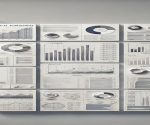Cost and management accounting helps business in better planing,controlling and decision making about money and resources. It underpins day-to-day operations and long-term objectives. Cost and management accounting is the process of gathering, analyzing, and reporting cost and financial information to aid managers in making informed decisions. It also enhances business performance by minimizing waste and maximizing efficiency. In this article, you will learn all about it, its features, types, functions, and also how is it different from other kinds of accounting.
What is Cost and Management Accounting?
Cost accounting is the study of how much it costs to produce a product or offer a service. It enables businesses to discover where they are overspending. It tracks every rupee through methods like standard costing, marginal costing, job costing. Cost accounting is characterized by detailed tracking of costs, control of costs, and planning of budgets. It targets specifically the internal cost of goods, services.
Cost Accounting vs Management Accounting
Cost and management accounting are the study of how companies manage resources and inform better decisions; understanding their difference helps students and professionals do just that. Both accounting methods can help businesses, but they do so in different ways
Cost accounting is the study of how much it costs to produce a product or offer a service. It enables businesses to discover where they are overspending. It tracks every rupee through methods like standard costing, marginal costing, job costing. Cost accounting is characterized by detailed tracking of costs, control of costs, and planning of budgets. It targets specifically the internal cost of goods, services.
Management accounting, on the other hand, is more wide-ranging. It utilizes cost data and financial data to facilitate sound business decisions by managers. Billing, budgeting, and financial planning, and performance analysis come under this. Management accounting processes are agnostic as to which part of the business is involved, be it marketing or operations or other process, leveraging data to enable better decisions.
| Basis | Cost Accounting | Management Accounting |
| Focus | Cost control and product costing | Decision-making and performance |
| Type of Data | Mainly cost data | Both cost and financial data |
| Time Frame | Historical cost tracking | Past, present, and future planning |
| Objective | Reduce cost and increase profit | Improve decisions and strategies |
| Reports | For internal cost analysis | For internal managerial decisions |
Cost accounting simply tells you “how much something costs. Management accounting informs you “what to do next”. Thus, the difference between cost accounting and management accounting lies in their purpose and the type of data they employ.
If you want to be an accountant or business manager, then knowing the difference between cost and management accounting is very crucial. This difference acts as an edge for many small and large businesses in India as they nurture and grow to outstand this competition and plan accordingly for their future success.
Cost and Management Accounting Features
Whatever industry you are working in, whether finance, health care/medical, production or manufacturing services, there is no escape from using cost and management accounting, however before going to practical supermarket/shop, we will discuss here about reason for using cost management accounting and its objectives. It is useful for every kind of business due to the characteristics and objectives.
Cost Accounting Features Following are some of the cost accounting features:
- It gathers and tabulates all expenses incurred in the production process.
- It aids with product pricing when costs are calculated right.
- It monitors direct and indirect costs such as materials and salaries.”
- It aids in budgeting and cost planning for the future.
- It aids cost control by identifying additional or wasteful expenses.
Cost accounting is inherently practical in nature. It is concerned with real numbers and facts. It doesn’t guess. It reveals how much a good or service really costs.
Cost and management accounting together comprise the following features:
- Providing managers with useful reports
- Supporting planning and forecasting
- Assisting in the creation of business policies.
- Cost comparisons of different time periods.
- Helping with break-even analysis, so you know when profit begins.
Cost accounting is always the base of management accounting. Planning and decision making needs cost data, and it finds nothing with the absence of the latter.
Purpose of Cost Accounting
The goals of cost accounting can be:
- To calculate the complete cost incurred for each product or service.
- Establishing the selling price after having knowledge of the cost.
- So as to manage waste, and unnecessary expense.
- So we know how to budget for future operations.
- There is more to cost and management accounting than this. They aim:
- Helping in providing accurate information for day-to-day decisions.
- To establish a measurable target for each of the departments.
- to see how every part of the business is doing.
- To lead the business in profitable growth.
Here are the 6 facts about cost and management accounting. It also interprets those numbers for managers. Its task is converting data into intelligent actions.
The objectives of cost accounting and implementing them in daily life and for looking into the future for survival in business are very crucial for India paying much attention to the cost control for small-business and startups.
Importance of Cost and Management Accounting in Business
Cost and management accounting comes into play in the current fast-paced environment in the business ecosystem where every rupee matters especially in India. It enables organisations to remain focused, optimise resources, and increase the profitability rates. Cost and management accounting is important because it is used in various businesses. It helps:
- Reduce the cost of producing products by revealing where money is being lost.
- Know the real cost of goods to make prices more accurate.
- Increase profit through getting companies to set better budgets and plans.
- Monitor the performance of various departments and employees.
- Help businesses when they need to decide between two or more options
Cost and management accounting is used daily by businesses in Indian industries such as manufacturing, textiles, IT, and food. They employ it to prevent losses and gear up for competition.
For instance, a factory in India could make 1000 shirts per week. Which is assuming there is no hidden cost of fabric, labor, machine, etc. Cost accounting will help the owner know the cost per shirt. Management accounting can advise the owner whether he needs to selling more shirts online or start a shop in a new city.
Companies face hard business calls, such as opening a new office or trimming staff, cost and management accounting is highly relevant. It provides the logic behind those decisions with data.
Functions of Cost and Management Accounting
- Data is recorded based on all the activities related to cost.
- Providing management with valuable reports of spending.
- Assisting in budgeting and forecasting.
- Performance evaluation of workers and departments
- Making critical decisions like pricing, outsourcing and expansion.
This is how key functions of cost and management accounting operate:
- Budgeting: It assists in developing realistic budgets from the actual costs.
- Cost Control: It reveals places where business spends a lot.
- Decision Making: It assists with selecting between option A or B, such as to buy or to make.
- Performance Check: Displays which department or product is performance。
- Planning: It uses past data to plan future business objectives.
This benefits business owners and managers at all levels. These functions are essential to every business, be it a small sweet shop or a large IT firm in Bengaluru.
Relevance to ACCA Syllabus
Cost and management accounting is a significant subject in ACCA’s Applied Skills and Strategic Professional levels. It is the bedrock for decision, budgeting, performance assessment, and control. It is directly connected with examinations such as Performance Management (PM) and Advanced Performance Management (APM). Their understanding of this will continue to be very important as they learn about costing systems, variance analysis, and cost behavior.
Cost and Management Accounting ACCA MCQs
Q1.Activity Based Costing(ABC)What does ABC do?
A) To calculate tax liability
B) To reduce production time
C) To assign costs based on actual activities
D) Do break-even point calculations
Ans: C) Cost tracing based on actual activities
Q2: Which of these does the nature say is a fixed cost?
A) Direct materials
B) Electricity cost per unit
C) Factory rent
D) Commission on sales
Ans: C) Factory rent
Q3: The name of a variance that occurs when actual cost is more than standard cost is?
A) Favorable variance
B) Neutral variance
C) Standard variance
D) Adverse variance
Ans: D) Adverse variance
Q4: What is the best costing method for unique, customized jobs?
A) Process costing
B) Absorption costing
C) Job-order costing
D) Marginal costing
Ans: C) Job-order costing
Q5: What has been consider from the above as a period cost in marginal costing?
A) Direct labor
B) Variable Mfg Overhead
C) Manufactured overhead
D) Direct materials
Ans: C) Fixed manufacturing overhead
Relevance to US CMA syllabus
US CMA Syllabus: Cost and Management accounting is 1st part of the US CMA syllabus which contains Financial Planning, Performance, and Analytics. It includes budgeting, costing methods, variance analysis, cost behavior—all crucial for managerial decision-making. The CMA candidates require this to create performance measurement techniques and internal controls.
Cost and Management Accounting CMA Questions
Q1: Under ABC, which of the following is not considered a cost driver?
A) Number of machine hours
B) Units produced
C) Number of setups
D) Direct labor cost
Ans: D) Direct labor cost
Q2. What is break even?
A) At the break-even point where total revenue = total cost
B) The point with the greatest profit
C) Once all variable costs have been recovered
D) When net income is equal to fixed costs
Ans: A): Revenue = Total cost
Q3: On the flip side, if it is working with a Company which has high operating leverage:
A) Low contribution margin
B) High variable cost
C) More sensitivity of profit to changes in sales
D) Low fixed costs
Ans: C) dp/dS of higher magnitude
Q4: A costing technique that helps in pricing decision?
A) Standard costing
B) Absorption costing
C) Target costing
D) Process costing
Ans: C) Target costing
Q5: Budget based on the level of activity is known as a __.
A) Fixed budget
B) Capital budget
C) Flexible budget
D) Zero-based budget
Ans: C) Flexible budget
Relevance to US CPA Syllabus
Cost and managerial accounting fall under the BEC (Business Environment and Concepts) portion of the CPA exam. The concepts include cost behavior, budgeting, performance measures and internal controls. Candidates who have a firm understanding of cost accounting are better positioned to inform business strategy and operational decisions.
Cost and Management Accounting CPA Questions
Q1: What do you understand by the purpose of variance analysis in management accounting?
A) To reduce fixed costs
B) To measure actual vs planned results
C) To estimate income tax
D) To prepare balance sheets
Ans: B) For comparing actual results to expected results
Q2: All of the following are included in manufacturing overhead except for which one?
A) Factory supervisor salary
B) Depreciation on plant
C) Raw materials
D) Maintenance on equipment
Ans: C) Raw materials
Q3: In CVP analysis, contribution margin is:
A) Sales – fixed costs
Total revenue — variable costs. B.
C) Net income + fixed costs
D) Revenues - variable costs
Ans B) Total revenue − variable costs
Q4: What is job costing primarily used to track?
A) Daily operational costs
B) Cost per batch of units
C) Cost per service activity
D) Cost per a job or orders
Ans: D) Cost of specific jobs or orders
Q5: What is included in product cost under absorption costing?
A) Only variable costs
B) Only direct materials
C. Both Fixed and Variable Manufacturing Costs
D) Administrative costs
Ans: C) Fixed and variable manufacturing costs
Relevance to CFA Syllabus
In CFA Level 1, Financial Reporting and Analysis covers a little bit of cost and management accounting. You need to know how costs behave, how to assess inventory, and how to measure performance. It assists in the examination of how effectively and profitably a firm’s resource is utilized.
Cost and Management Accounting CFA Questions
Q1: What is the inventory valuation method that will report higher COGS when prices are trending higher?
A) FIFO
B) LIFO
C) Weighted average
D) Specific identification
Ans: B) LIFO
Q2: What is cost accounting primarily used for by investors?
A) To prepare audit reports
B) To measure operational progress
C) To file tax returns
D) To test government policy
Ans: B) For purpose of evaluating operational efficiency
Q3: A definition of the term please: “cost behavior”.
A) Cost how to related to the marketing decision
B) Cost behaviour with activity level
C) Customer satisfaction-related costs
D) Tax deduction behavior
Ans: B) How costs behave with respect to activity levels
Q4: A firm that adopts FIFO in a inflation will show:
A) Lower profits
B) Higher cost of goods sold
C) Lower inventory value
D) Higher profits
Ans: D) Higher profits
Q5: A high operating margin means that a company is able to generate a high profit before interest and taxes relative to its total sales.
A) High administrative costs
B) Effective control on pricing power and expenditure
C) Poor inventory turnover
D) Low profitability
Ans: B) Strong pricing power and cost control


